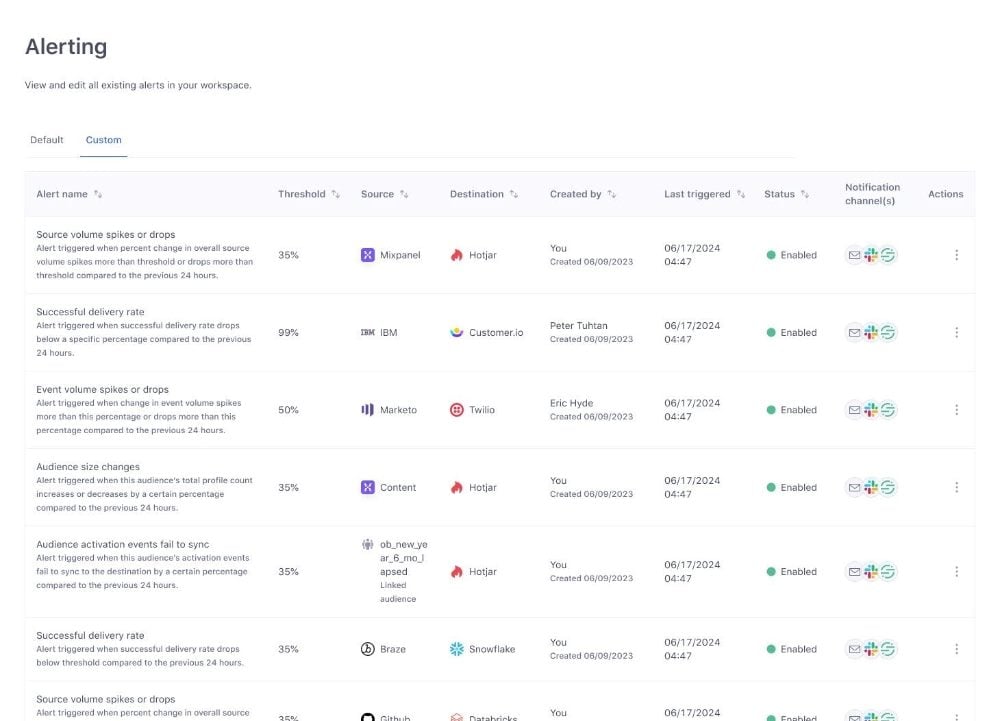The Gist
-
Enhanced data observability. Twilio adds granular event logs and centralized alerting tools.
-
Expanded API automation. New APIs and no-code features increase data management flexibility.
-
Impact on data teams. Helps enterprise data teams ensure reliability and faster issue resolution.
Twilio announced a suite of new data features for its customer engagement platform on Oct. 15. The global release includes granular observability tools, a centralized alerting hub, expanded APIs, and auto-instrumentation capabilities.
The new features are designed to help enterprises build and maintain customer experiences with trusted data, according to company officials. Available today via Twilio Segment, the tools aim to provide data teams with improved visibility, faster issue detection and expanded automation capabilities.
Table of Contents
- Impacted Audiences for Twilio's Data Features
- The Race to Unify Customer Data Across a Fractured Martech Stack
- Twilio Bets on Observability and APIs to Drive Trusted Engagement
- Twilio Background
Impacted Audiences for Twilio's Data Features
-
Data engineers and teams managing customer data infrastructure
-
Marketing teams relying on accurate customer data for campaigns
-
Enterprise technical leaders seeking reliable customer engagement solutions
The Race to Unify Customer Data Across a Fractured Martech Stack
Data integration delays are crippling marketing effectiveness as businesses struggle to unify customer information across an expanding technology landscape.
Twilio, known for its Segment CDP platform, has been a significant player in the customer data platform space, offering data pipelines and real-time event streaming capabilities. The company's latest data features aim to address challenges faced by marketing teams.
These challenges are substantial. With over 15,000 potential martech solutions spanning analytics, enrichment, identity and engagement, the backbone of effective customer experience remains data integration and modeling, according to industry experts. Many organizations find their data is good but arrives too latesometimes taking weeks to deliver insights.
Real-time integration via APIs has become crucial for amplifying business use cases. Recent discussions highlight how API integration with CRMs, marketing platforms and contact centers expands learning and ROI across organizations.
Twilio asserts its enhanced observability, alerting and API capabilities will help enterprises build customer experiences with trusted data. This aligns with broader industry trends where businesses seek solutions that integrate with existing systems to improve operational efficiency while managing customer interactions across multiple channels.
Related Article: Twilio's Product Roadmap: Enhancing Customer Support and Engagement

Twilio Bets on Observability and APIs to Drive Trusted Engagement
With today's updates, we're giving businesses a smart and intuitive control tower for every signal across the customer journey. By bringing together complete observability, proactive alerting, seamless instrumentation, and API-first workflows, we are unlocking platform-wide capabilities designed to help our customers build engagement that is not only trusted, but truly transformative.
- Inbal Shani, chief product officer and head of R&D
Twilio
Twilio Customer Engagement Feature breakdown
According to Twilio, the new capabilities address common challenges faced by data teams.
| Capability | Description |
|---|---|
| Granular observability | Failed delivery logs with event ID details for faster issue diagnosis. |
| Alerting hub | Centralized alert management with customizable thresholds for data issues. |
| Expanded APIs | Programmatic audience management and profile access for data teams. |
| Auto-instrumentation | No-code event tagging for non-technical users on web and mobile. |
| Profile APIs | Direct access to unified profiles with compliance controls for PII. |
Twilio Background
Founded in 2008 in San Francisco, the company provides cloud-based communication tools primarily targeting software developers and enterprise technology teams.
Communications Platform
The company offers application programming interfaces (APIs) that enable businesses to embed messaging, voice, video and email capabilities into their applications. Its platform supports programmable communications, customer engagement, and contact center solutions. These services are designed to simplify integration with existing business workflows and systems.
Market Position
Operating in the cloud communications sector, the company serves a wide range of industries including retail, financial services and healthcare. Its customers typically range from startups to large enterprises seeking scalable communication infrastructure. The company is often cited for enabling digital customer engagement and rapid deployment of communication features within business applications.
Have a tip to share with our editorial team? Drop us a line:
